Let me be clear from the outset, Sarah and I have never been coffee drinkers.
In fact back in my days of gainful employment, it was actually a bit of running joke that people would ask me if I wanted a coffee as they ducked out to get their 1st, 2nd or 3rd for the day.
It’s not that we’re loathers of coffee (I would surprise my colleagues by saying yes every 3 months or so), in fact we love the smell of it.
However given the option, we’d just go for tea.
During our time at Lanquin however, we met an Australian couple who had nothing but praise for a coffee tour they’d partaken of near Antigua (in fact they listed it as one their highlights from several months in South and Central America), so we grabbed the details off them and looked it up.
The tour was run by a group called De la Gente (which when translated means “From the People”), a not for profit organisation who conducts tours where all the proceeds go to the farmers.
We loved the sentiment of it all, so shot them an email and confirmed a time.
As such, our third day in Antigua saw us up early, trying to grab a Tuk-Tuk for the 10 minute journey to the nearby town of San Miguel Escobar.
It was a pretty bumpy experience until we got off Antigua’s cobbled streets, but it wasn’t long before we were outside the town’s church, waiting for our guide for the tour.
The farmer Andreas and his daughter Cindy actually arrived before the guide Joey appeared and we made the 10-15 minute walk the side of the volcanic hill to the plantation.
This area is rich volcanic soil and the most lucrative crop for these people to make some money and better their lot in life is coffee, in this instance grown on the slopes of the Volcan de Agua (named as such since a tragedy which effectively wiped out this once huge colonial town when the volcanoes cone overflowed with rain water).
A bean deep red in colour, is apparently ripe for the picking, and in this plantation the beans were only beginning to reach the desired claret.
Still it did mean we were able to try our hand and assist them at the same time, by plucking a few fruit of the correct colour off a selection of trees.
Andreas is one of just over twenty farmers involved in a Co-Op, one of the benefits being they can acquire interest free loans (the loans are provided by foreign backers, many of whom have become so after embarking on one of these tours) enabling them to purchase extra land to continue to grow their business.
In addition to the coffee, which is their true cash crop, the also have smaller plots in which to grow many staple vegetables, key amongst these being beans and maize (corn).
After touring the plantation for some time, and the both of us receiving a few rather itchy ant bites for our troubles, it was back to Andreas’ home where we were shown additional parts of the coffee process.
From riding bikes, to sorting the dried coffee beans by hand to remove any residual husk (as well as to sort out the discoloured or misshapen beans), it was an interesting affair.
Then came the fun part.
Getting to enjoy the fruits of ours, but mainly the family grandmothers’ labour.
Despite her age, she was a machine, stirring the coffee as it was roasted to guarantee it was cooked evenly, not burnt, followed by an effortless technique when grinding the coffee by hand.
Both Sarah and I attempted to do so with varying, and very slow degrees of success.
In this case youth was an incredibly long way from trumping experience!
As we sat down to enjoy lunch with Andreas and Joey, a delicious affair of chicken, rice and a lovely tomato sauce and a little Wisquil (also spelt Guisguil, an indigenous plant similar to potato), we were also finally able to sample the freshly roasted and ground coffee.
We tried it straight up and it was actually pretty good, although the addition of a little sugar made it even more palatable to our non-coffee trained tongues.
It will probably shock many people back in Australia where there is such a strong coffee culture, especially in Melbourne (in fact Australians are so particular about their coffee, it is one of the few places where Starbucks has failed), to know that the Guatemalans actually drink their coffee very weak and with the addition of a lot of sugar.
After walking with Joey back to the De La Gente office in town, where one of the staff members gave us some great tips on where to get delicious cakes back in Antigua, we bid our farewells before taking a Chicken Bus (actually our first Chicken Bus ride in Guatemala) back to town.
Some things you do just feel right, and a particular response from Andreas really stood out in our minds.
When asked what a difference being involved in the Co-operative has made to his life, this is what he had to say.
“Now my family can eat three meals a day. Before I was a part of this, we would eat only once…”
Notes:
* Our coffee tour with De La Gente was by no means the cheapest option at $200.00 Quetzales per person (we paid an additional $50.00 Q each for lunch with the family), however the not for profit organisations intent to make sure all proceeds of the tour were received by the Farmer (not to mention the glowing review it was given by an Australian couple we met in Lanquin) made it an easy decision for us to participate in (the $200.00 Quetzales cost, also includes 1 lb of coffee each for us to take away with us).
* To get to San Miguel Escobar, we took a Tuk-Tuk from near the Parque Central for $30.00 Quetzales and it deposited us in the town square.
* For the return journey we took a local ‘Chicken Bus’ for the meagre sum of $3.00 Quetzales per person.

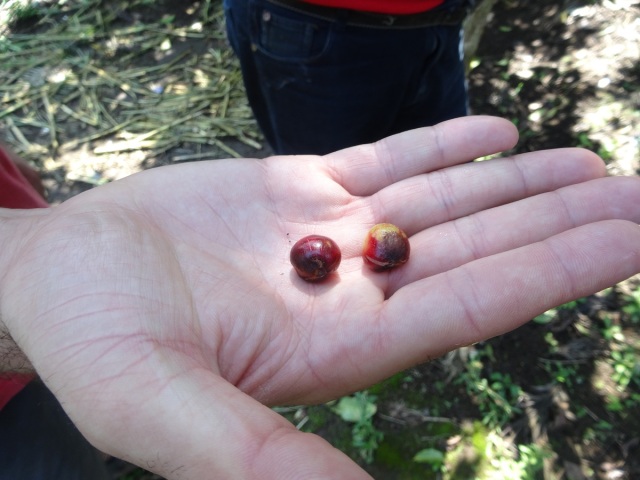
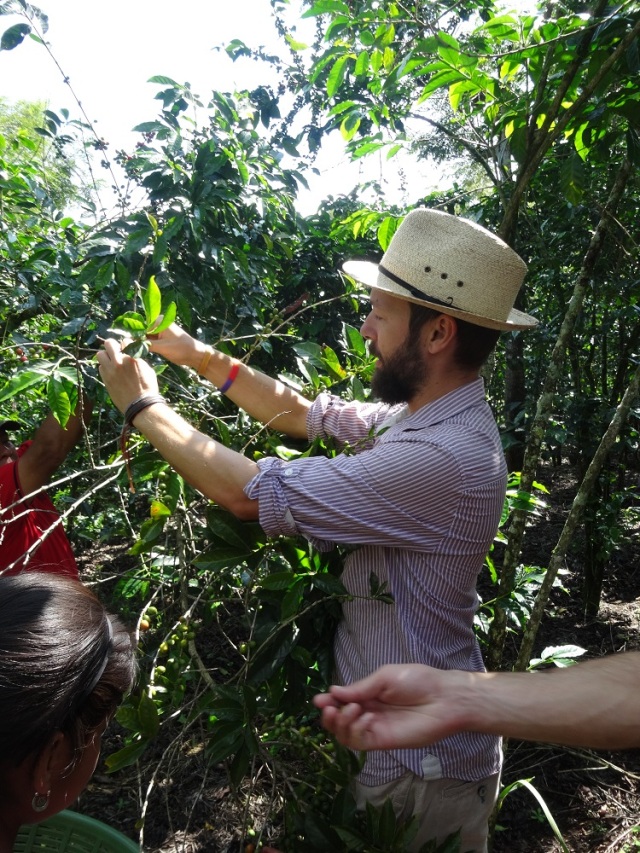
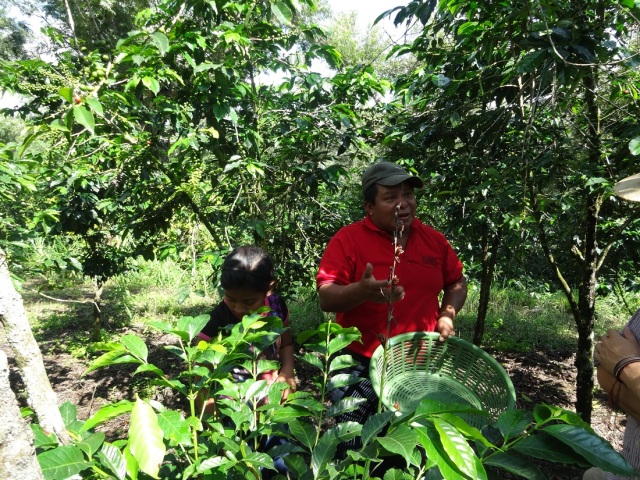
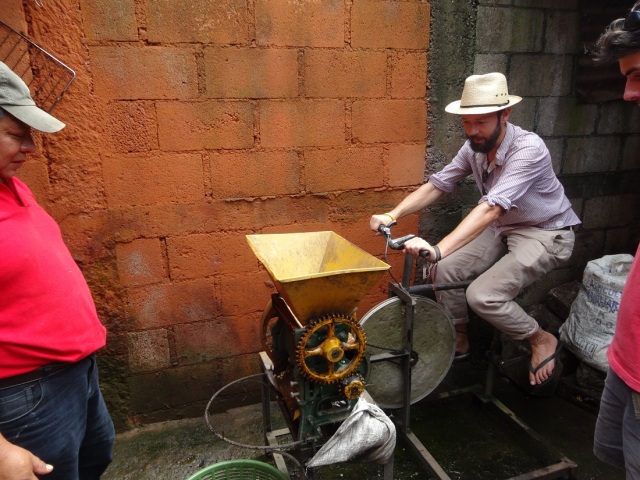
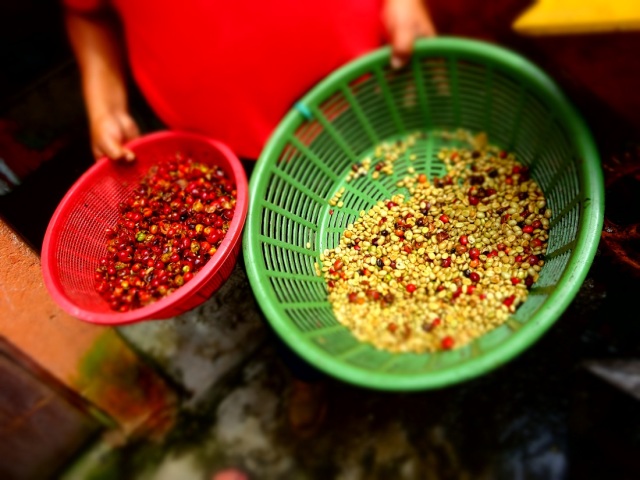
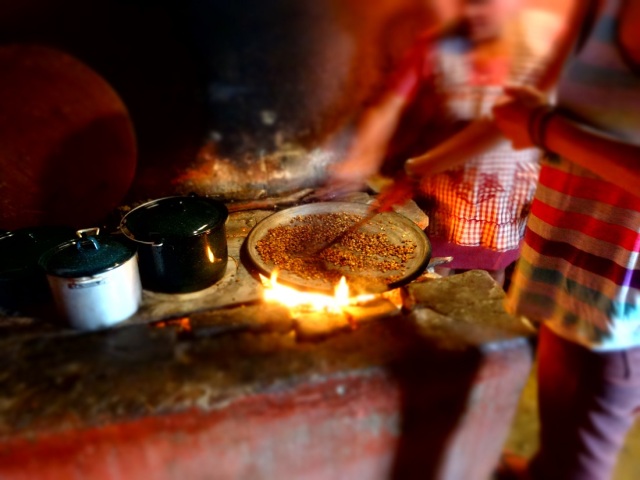

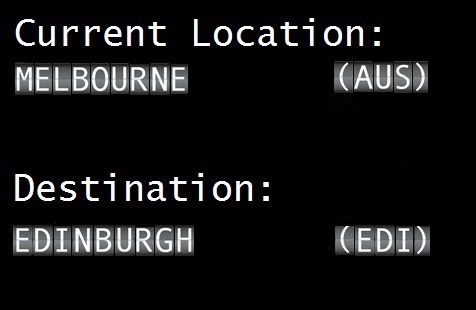
That’s totally a tour that I would do. In fact, there’s no way I’d miss something like that. I loves my coffee. 🙂 That lady has some seriously strong arms.
She was like a machine!
It was a great little tour and we’d happily recommend it to anyone
The fresh, Guatemalan coffee was delicious when I tried it. And those chicken buses are always a blast. Nice piece!
Thanks!
Guatemala is a great little country, that is for sure 🙂
I hate coffee, but took a similar coffee plantation tour in Tanzania. It’s an interesting process, even if you don’t like coffee. And if you do, I think you should know about the process that brings it to you! I love reading your posts!
I agree, and love, like or loathe it, it really was just an interesting and rewarding day.
Thanks for the incredible compliment as well! 🙂
Hi Chris: Thx for the entertaining and enlightening post. I absolutely adore good coffee, so have no doubt I would enjoy this tour. The process of husking and roasting the coffee beans is actually similar to how many smaller cocoa producers deal with their beans. Pretty labour intensive!
Hi Chris!
Loved the post! It reminds me my grandma 🙂
She used to have some coffee trees in her house and form time to time we could get delicious coffee prepared by her.
Cheers!
Glad I could bring forth some great memories for you!
It truly was a lovely day for us to be a part of 🙂
What a fun excursion! I’m not much of a coffee drinker (tea all the way for me as well!), but I love doing behind-the-scenes stuff like this. There’s just something about understanding the process that fascinates me. I’ve never been on a coffee plantation tour, but there is a tea plantation near where I live, and that tour was great! 🙂
We’d love to do a tea plantation tour!
In fact I’d be happy to just to have a nice cup of tea (it has been so long)!
Hey Chris, have you tried ex deals with company? Like a free tour in exchange of a feature? If not, you should! Let me know if I can help.